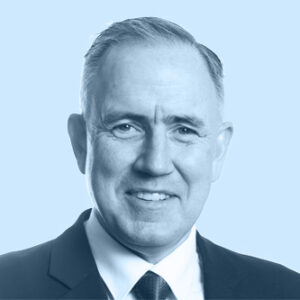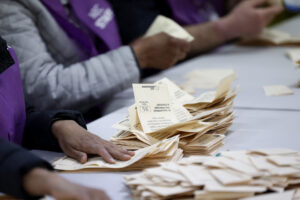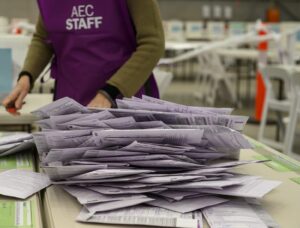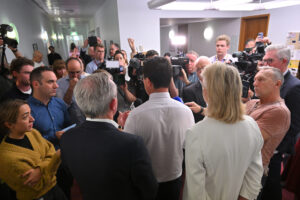Scott Morrison spent the summer in the Canberra bubble and both he and our democracy are better for it. After finally spending some quality time in the Lodge, it would be good if he made it permanent.
Until the 2019–20 bushfires, Prime Minister Scott Morrison had made Kirribilli House in Sydney his family home—modelling himself on John Howard, whose 11 years in power were the longest period that Canberra was not the home of Australia’s Prime Minister since the Lodge was built.
But in times of crisis—first the fires and now the COVID-19 pandemic—Morrison has used Canberra as his base of operations.
In retrospect, it seems obvious that the leader of Australia should lead from Australia’s capital, where the public service, the Parliament and the bulk of expertise are all there at the Prime Minister’s service.
However, pandemic or not, there are always crises and problems in need of the Prime Minister’s attention, and he is best placed to address them from Canberra on a full-time basis.
Instead of cherishing the role of Canberra in making our democracy work, members of the government criticise “Canberra” to deflect from the fact that it is the politicians, and not the public servants, who are ultimately in charge of and responsible for the country’s laws, regulations and bureaucracy. The actual government foments discontent against the idea of government, represented by public servants and press gallery journalists, deflecting responsibility from politicians.
This attitude is typified by the Prime Minister’s favourite put-down: “the Canberra bubble”.
It is not unusual for politicians to avoid questions that they do not want to answer, but the blanket excuse, “that it is a Canberra bubble issue” treats the questioner with contempt. It is one thing to dodge a question, but quite another to imply that the questioner has exposed themselves as an out-of-touch insider just by asking it.
Everything from leadership ructions in the National Party, to the merits of unisex bathrooms, to alleged war crimes by a Victoria Cross recipient have been brushed aside as “Canberra bubble” issues. It is as if those of us who live in Canberra are the only ones who care who the Deputy Prime Minister is (another bubble issue according to the PM) or whether children were murdered by Australian soldiers. If the Australian public were truly indifferent to when the election is held (also a bubble issue apparently), Morrison could simply say that he will hold the election whenever he wants. In fact, it is precisely because people care about the answers the Prime Minister gives, that he finds it preferable to dismiss the premise of the question with the Canberra bubble line instead of stumping up an answer.
It seems particularly impolite for the Prime Minister to write off issues as “Canberra bubble” talk while he and his family are staying behind the walls of Canberra’s famous home, albeit temporarily. The “Canberra bubble” notion is not even an Australianism. It is Scott Morrison’s adoption of the “Westminster bubble”, in use since 1998, and the 2012 Time Magazine coined “Washington bubble”. If we are going to sneer at our own capital, we could at least make it original.
But really, why is the sneer necessary at all? The riots in the United States Capitol shook the world not just because of the violence that took place and the very real threat of more, but because in a democracy the organs of government are sacred.
We were transfixed by Joe Biden’s inauguration address this week and the positive possibilities it might hold for the planet. At that speech’s very heart was a plea for, and defence of, democracy: “We’ve learned again that democracy is precious, democracy is fragile”. A sentiment the Prime Minister would be wise to echo.
Deriding the Canberra bubble and eschewing the Lodge sends the exact opposite message. To treat the seat of democracy with scorn is to treat democracy with scorn, and in these troubled times we need the Prime Minister to boost confidence in our institutions, not undermine them.
So while Biden works to buttress democracy against the hordes who attempted to trample the Capitol, Morrison does the opposite with simplistic Canberra capital bashing that risks weakening democracy in this country.
Trust in our institutions is particularly important as the COVID-19 pandemic enters its second year. The public servants in the Department of Health will organise the vaccine rollout from Woden, in Canberra’s south. The nation’s lives and prosperity are in their hands. What does it communicate to the public for the Prime Minister to dismiss them as part of the “Canberra bubble”? And if they have questions of the Prime Minister, why shouldn’t he answer them?
If the Prime Minister wanted to recognise the good work that the public service and Parliament do, he could embrace Canberra and what it has to offer him and the country. The public service is apolitical and expert, “frank and fearless”; it serves every Australian. Prime Ministers should want to be associated with it. Some of Australia’s most celebrated PMs did including Menzies, Fraser, Hawke and Keating.
Canberra was built to unite the country, a necessary product of our Constitution. Its relative isolation is not snootiness but a compromise between New South Wales, Victoria and South Australia that made Federation possible. Canberra’s regional location nestled in the bush means it has more in common with rural and regional Australia than densely urban Sydney, Melbourne or Brisbane do; it is also the only capital with an Aboriginal name.
Hopefully, as the Prime Minister spends more time in the capital, he will find himself less influenced by John Howard and more by another Liberal Party great: Robert Gordon Menzies.
Physical proximity to the capital makes it harder for politicians to use “Canberra” as shorthand for faceless elites and bureaucrats. Menzies made Canberra his home during his entire time as Prime Minister; the Lodge was not just his principal residence but his only home. The Menzies’ disposed of both their Melbourne properties within a year of Robert becoming Prime Minister. The Australia Institute’s offices look out on Manuka Oval, where Menzies spent many hours watching Aussie Rules or the cricket. Ironically, a young John Howard only met his party’s longest-serving Prime Minister thanks to an invite to one of the Menzies’ cocktail parties at the Lodge.
In his final press conference as Prime Minister, Menzies said: “Canberra is my pride and joy. It is indeed.” Let’s hope that Scott Morrison expresses the same sentiment one day.
Ben Oquist is the executive director at independent think tank The Australia Institute @BenOquist
Between the Lines Newsletter
The biggest stories and the best analysis from the team at the Australia Institute, delivered to your inbox every fortnight.
You might also like
Now that there are no safe seats – the ‘bellwether seat’ is no more.
Media analysis shows that the decade from 2007 was the bellwether era, but that era has now passed
Why the election’s closest seat went unnoticed: Too close to Calwell
Updated 30/05/2025 The outer-Melbourne electorate of Calwell was named “Australia’s most unpredictable seat” by The Age after the election and was – aside from those going to a recount – the last seat to be called. The AEC labelled the counting process for the seat “likely the most complex in Australia’s history”. The count is
Hearing voices: why the Nats should be watching their backs
The community independent movement did not begin in Sydney or Melbourne, but in the bush.



